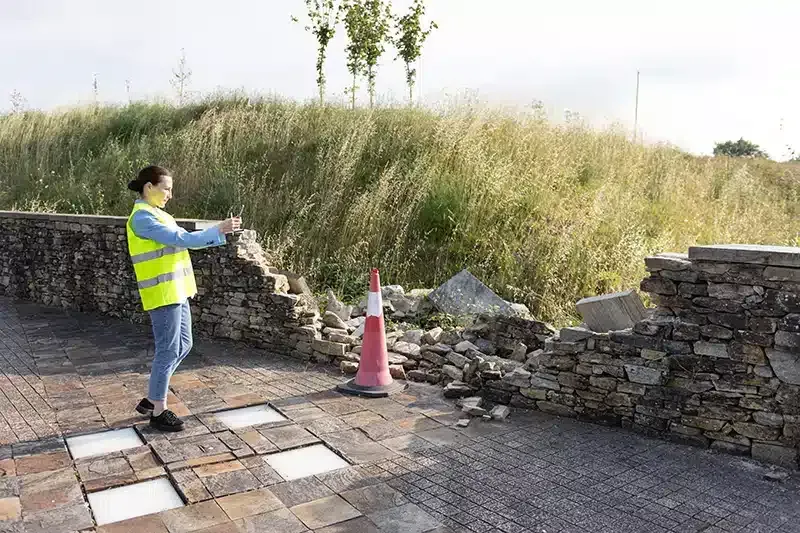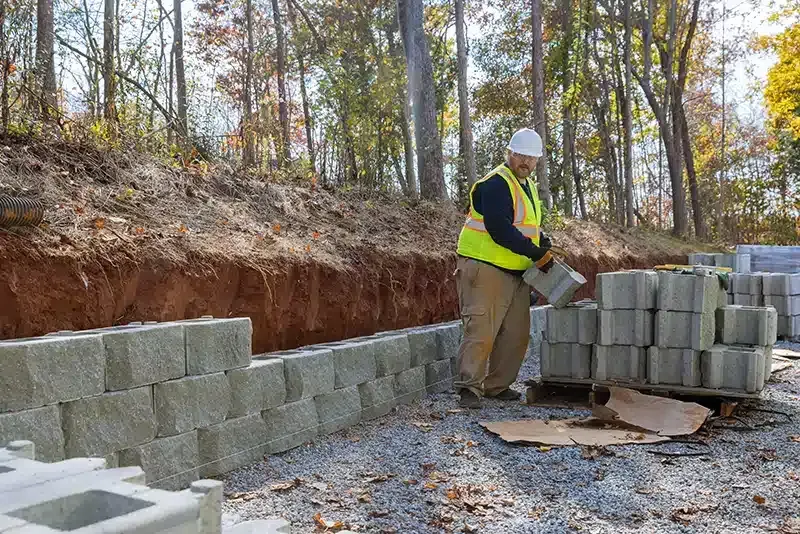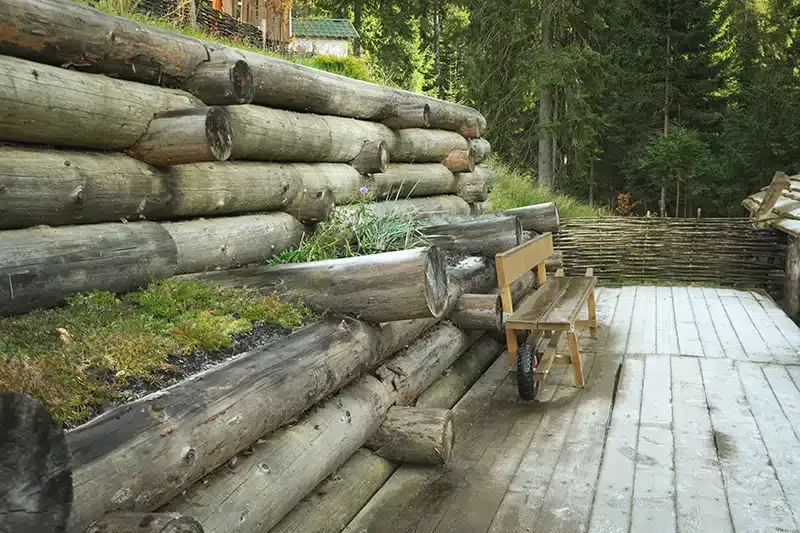How Do Stone Retaining Walls Create More Usable Outdoor Space?
When envisioning your outdoor space, have you thought about how stone retaining walls could elevate its functionality?
These structures do more than just stabilize sloped areas—they create level surfaces that can be turned into gardens, patios, or play zones.
In addition to preventing soil erosion, they help optimize your land's potential, while offering privacy and visual appeal.
But the advantages go beyond aesthetics; a deeper understanding of their design and purpose could inspire even more creative ways to use your outdoor space.
What other possibilities could unfold from this strategic landscaping decision?
Understanding Stone Retaining Walls
Stone retaining walls are an integral part of landscape design, offering both aesthetic beauty and practical functionality. These structures serve as essential tools for managing soil and water, adding visual appeal while solving common landscape challenges.
By holding back soil, they prevent erosion and create flat areas on sloped terrain, significantly enhancing the usability of your outdoor space.
Types and Benefits of Stone Retaining Walls
Stone retaining walls come in various types, including dry-stacked stones and those reinforced with mortar.
- Dry-Stacked: These walls offer a natural, rustic look, ideal for creating informal landscapes.
- Mortar-Reinforced: For a more structured and durable wall, mortar offers added strength and stability.
Regardless of the type, stone retaining walls are known for their durability, strength, and timeless charm, seamlessly blending with the surrounding landscape.
Considerations for Construction
When constructing a stone retaining wall, it’s essential to factor in drainage and height.
- Drainage: Installing proper drainage systems alleviates water pressure behind the wall, ensuring long-term stability.
- Height: Taller walls often require additional engineering and support to maintain their integrity.
In essence, stone retaining walls are more than just a decorative feature—they’re a vital part of any landscape design, enhancing both the beauty and functionality of your outdoor environment.
Transforming Slopes Into Levels
Transforming sloped areas into flat, usable spaces can significantly enhance the functionality of your outdoor environment. Stone retaining walls are the perfect solution for this, creating level zones that can serve a variety of purposes—from gardening to patios.
These walls effectively hold back soil, allowing you to carve out functional sections in previously unusable, hilly terrain.
Create Functional, Enjoyable Outdoor Spaces
By leveling out slopes, you're not only improving the visual appeal of your yard but also creating zones that can be enjoyed year-round.
- Outdoor Dining: A flat, stable area makes a perfect setting for dining and socializing.
- Lounging: Create a peaceful retreat for relaxation.
- Children's Play Area: Safe, flat ground for play and activities.
This transformation turns an underutilized, steep yard into an inviting oasis for the entire family to enjoy.
Aesthetic and Practical Value in Design
Stone retaining walls can be customized to complement your home's style, adding both aesthetic appeal and practical value.
- Variety of Stone Types: Choose from different stones to match your vision, whether it's rustic, modern, or classic.
In conclusion, leveling your landscape with stone retaining walls enhances the beauty and functionality of your outdoor space, making it a more enjoyable and versatile area for your family. If you're ready to optimize your yard, consider how stone retaining walls can turn those slopes into the level spaces you’ve always wanted.
Enhancing Outdoor Functionality
Thoughtful landscape design can elevate the functionality of your outdoor space, and stone retaining walls are key to achieving this.
These structures help define specific zones for various activities such as gardening, entertaining, or relaxation, ensuring you make the most of your outdoor environment.
Create Stable, Usable Spaces
Leveling uneven ground with retaining walls provides a solid foundation for patios, decks, and other outdoor features.
- Entertain with Ease: A flat surface is perfect for barbecues and gatherings, free from the challenges of sloping land.
- Relax in Comfort: With a level area, you can unwind in a space that feels designed for comfort and leisure.
These walls not only boost the aesthetic value of your yard but also create functional spaces where memories can be made.
Privacy and Shelter with Natural Beauty
Stone retaining walls can act as natural barriers, offering privacy and protection from the wind.
- Add Vibrancy: Incorporate plants or flowers along the walls to create a vibrant, serene atmosphere.
Ultimately, stone retaining walls transform your outdoor space into a versatile and enjoyable area, making it an ideal environment for various activities. So, when planning your next outdoor improvement, think about how these walls can significantly boost the functionality and enjoyment of your yard.


